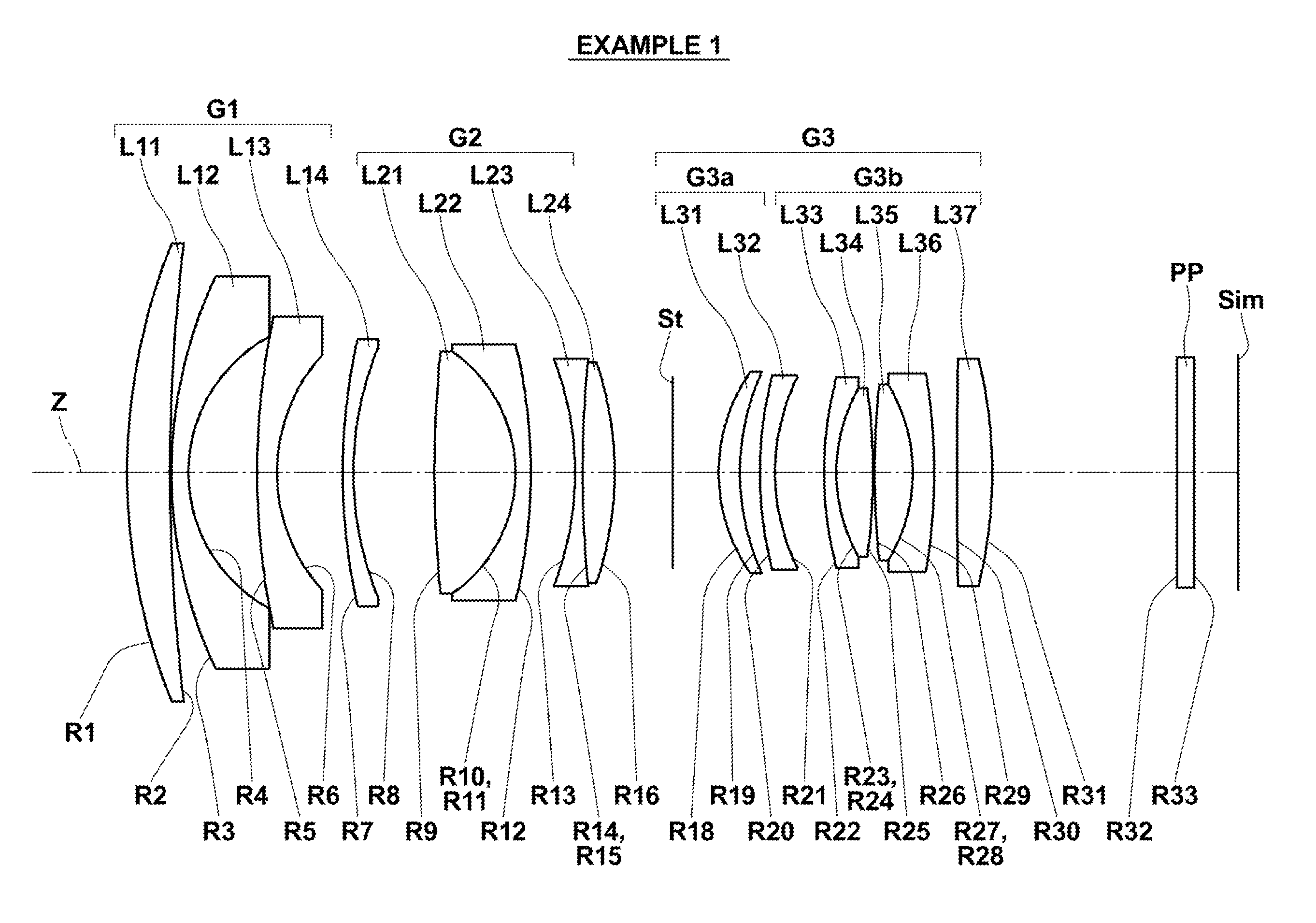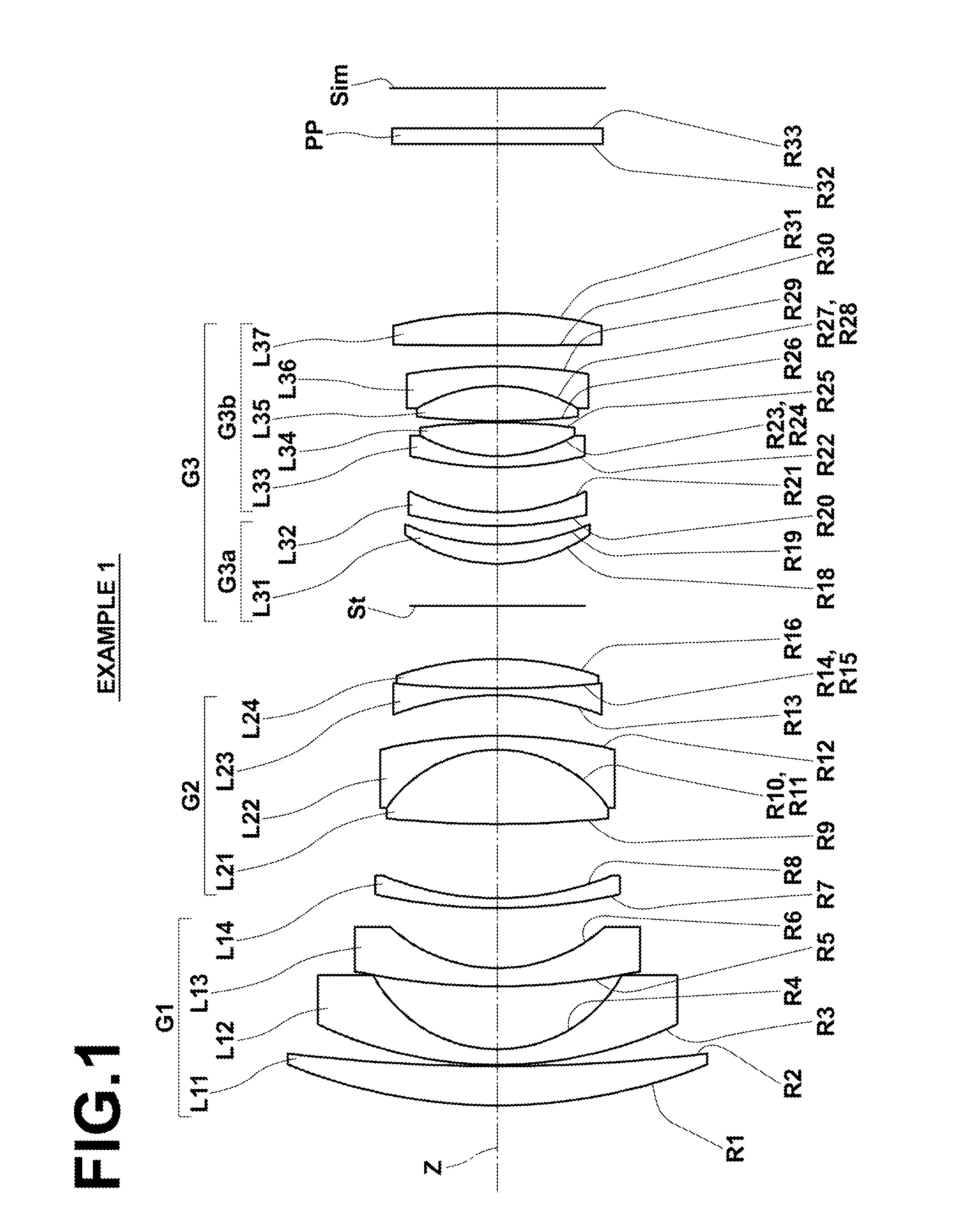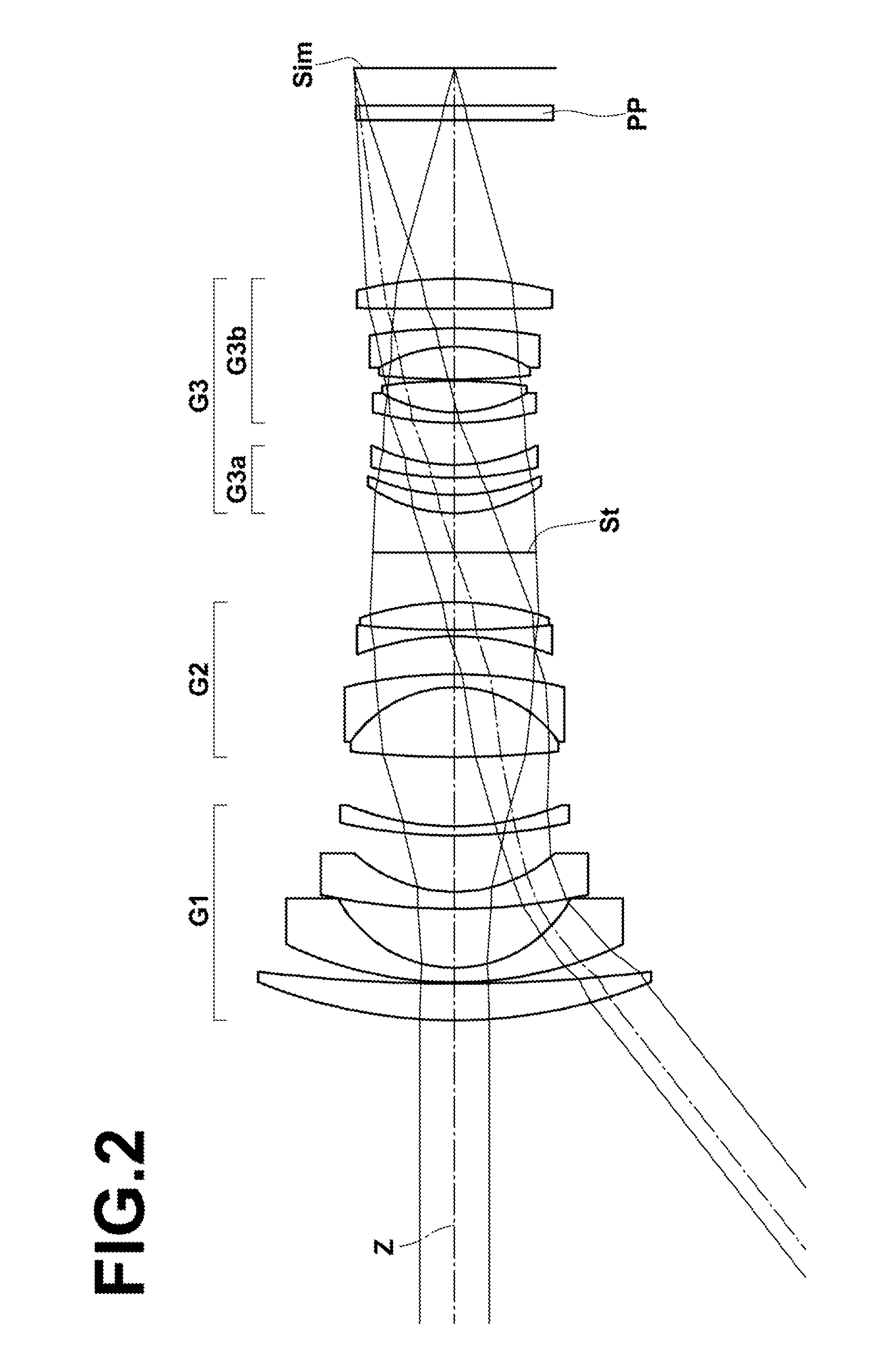Retrofocus-type wide angle lens and imaging apparatus
a wide angle lens and imaging apparatus technology, applied in the field of retrofocus-type wide angle lenses and imaging apparatuses, can solve the problems of difficult to meet a request for a small f-number, and achieve the effect of reducing a spherical aberration, reducing a high-order spherical aberration and a difference in spherical aberrations
- Summary
- Abstract
- Description
- Claims
- Application Information
AI Technical Summary
Benefits of technology
Problems solved by technology
Method used
Image
Examples
example 1
[0086]FIG. 1 illustrates the arrangement of lens groups in a retrofocus-type wide angle lens in Example 1. Since lens groups and each lens in the configuration illustrated in FIG. 1 have been described in detail already, repletion of the explanation will be omitted here unless necessary.
[0087]Table 1 shows basic lens data of the retrofocus-type wide angle lens in Example 1, and Table 2 shows other data of the retrofocus-type wide angle lens in Example 1. Similarly, Table 3 through Table 8 show basic lens data and other data of the retrofocus-type wide angle lenses in Examples 2 through 4. Next, the meanings of signs in the tables will be described by using the tables of Example 1, as an example. The meanings in Examples 2 through 4 are basically similar to Example 1. Here, Tables 1 through 8 show numerical value data normalized so that the focal length of the entire system is 1.
[0088]In the basic lens data of Table 1, a column of Si shows the surface number of an i-th (i=1, 2, 3, . ...
example 2
[0094]FIG. 3 illustrates the arrangement of lens groups in a retrofocus-type wide angle lens in Example 2. The retrofocus-type wide angle lens in Example 2 is configured almost similar to the retrofocus-type wide angle lens in Example 1, which has been described already. Table 3 shows basic lens data of the retrofocus-type wide angle lens in Example 2, and Table 4 shows other data of the retrofocus-type wide angle lens in Example 2. FIG. 7, Sections A through D are diagrams illustrating various aberrations of the retrofocus-type wide angle lens in Example 2.
TABLE 3EXAMPLE 2•BASIC LENS DATASiRiDindjvdj13.90250.251.7725049.60210.84850.0132.62630.071.6180063.3340.98820.5454.78210.071.8051825.4261.17880.3974.79360.071.4874970.2382.02500.5697.26810.511.9036631.3210−0.96750.001.5600237.6511−0.96750.071.8466123.7812−3.73640.2413−1.98990.051.6134044.271411.21360.001.5600237.651511.21360.201.7847026.2916−2.08350.4217(STOP)∞0.19181.19660.131.5182358.90191.85360.35202.20690.071.4874970.23211.2...
example 3
[0095]FIG. 4 illustrates the arrangement of lens groups in a retrofocus-type wide angle lens in Example 3. The retrofocus-type wide angle lens in Example 3 is configured almost similar to the retrofocus-type wide angle lens in Example 1, which has been described already. However, Example 3 differs from Example 1 in that aperture stop St is arranged between positive meniscus lens L31 and negative meniscus lens L32 in 3a-th lens group G3a.
[0096]Table 5 shows basic lens data of the retrofocus-type wide angle lens in Example 3, and Table 6 shows other data of the retrofocus-type wide angle lens in Example 3. FIG. 8, Sections A through D are diagrams illustrating various aberrations of the retrofocus-type wide angle lens in Example 3.
TABLE 5EXAMPLE 3•BASIC LENS DATASiRiDindjvdj13.75060.311.7725049.60210.23860.0231.85270.071.6180063.3341.04310.5456.02260.071.8466123.7861.01480.3677.61220.121.4874970.2382.13370.6797.91180.461.9036631.3210−0.95290.001.5600237.6511−0.95290.071.8466123.7812−...
PUM
 Login to view more
Login to view more Abstract
Description
Claims
Application Information
 Login to view more
Login to view more - R&D Engineer
- R&D Manager
- IP Professional
- Industry Leading Data Capabilities
- Powerful AI technology
- Patent DNA Extraction
Browse by: Latest US Patents, China's latest patents, Technical Efficacy Thesaurus, Application Domain, Technology Topic.
© 2024 PatSnap. All rights reserved.Legal|Privacy policy|Modern Slavery Act Transparency Statement|Sitemap



